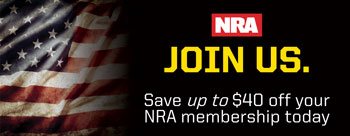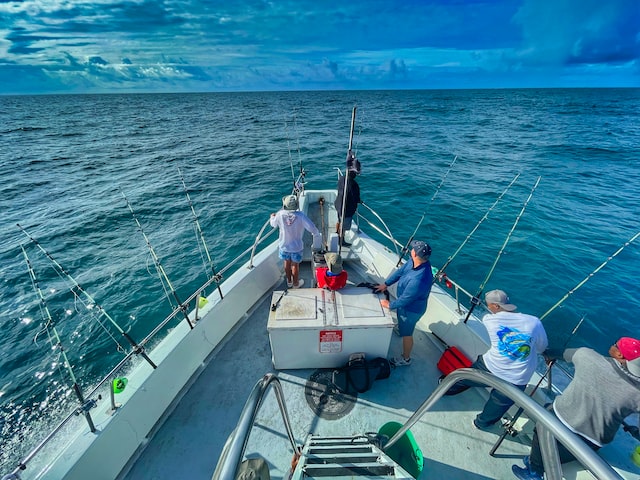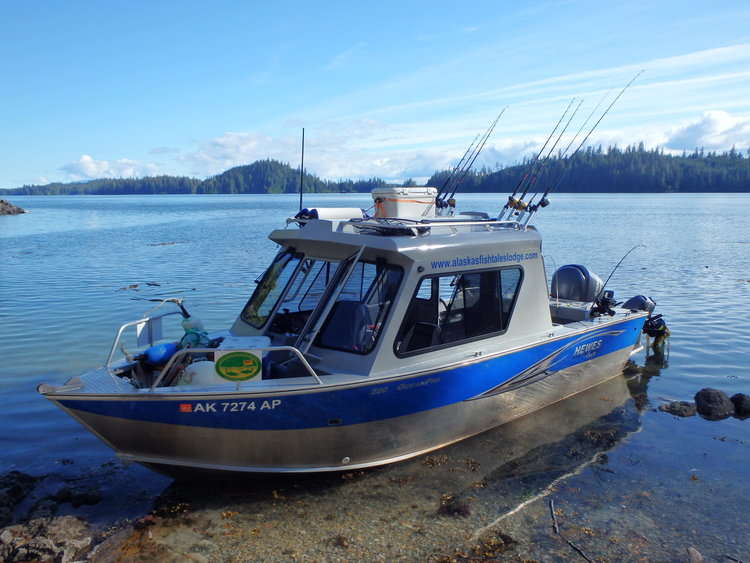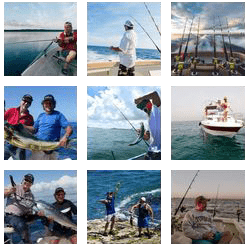AFRICAN SAFARI EQUIPMENT LIST
Having hunted Africa a number of times, we have some firm ideas of what equipment you need to have with you to hunt the Dark Continent. Please realize that conditions across Africa can vary widely, from highlands to lowlands; from thick bush to open savannah; from desert to swamp. Temperatures vary widely from frost to over 100 degrees, so this list is a rough guide ONLY.
Some of the things suggested you may not need; and you may need some not suggested. A typical plains game hunt differs from say- a cape buffalo hunt in a swampy area of Mozambique. What follows are general suggestions for your upcoming hunt. No list can cover every possible combination of weather or circumstance, but this will help you.
Adjust the list for your time of year and species, and style of African hunt. If you are climbing in sharp rock on kopjes (hills)—then a rugged boot sole with good ankle protections is needed. If doing leopard from a blind, super quiet clothing in black or very dark camo is needed. Call us for any assistance. Generally, bear in mind you need to adjust this list for anything unusual in the way of weather (eg-extreme heat or rain conditions) –or in the type of hunt. If in doubt ask!!!! We have been there and we have done it!! So please use our expertise!
In order to import your guns into So. Africa- you need permission (a permit). We strongly urge anyone traveling to Africa or going thru So. Africa to speak with us and get our advice.
DOCUMENTATION:
- Passport
- Plane Tickets
- Wallet And Money
- Copies Of Documentation About Hunt From Bmoa
- Gun Permit Forms
- US Customs Form 4457 For Guns And Cameras (Go To Nearest Customs Office Taking The Items With You!)
- A Current Hunting License- From Somewhere (Use To Back Up Your Claim You Are A Hunter Not A Terrorist!)
- A Medical Shot Card- Nice But Often Ignored.
- List Of Medical Conditions And Medications- Keep With You!! (Eg- Diabetes; Heart Problems, Etc). Allergies To Medications- Spell Them Out-Keep It With You.
TRAVEL WITH SPORTING WEAPONS
-
- When commuting through New York, Washington and Atlanta please make sure you have a minimum of 2hrs between flights, after recent research it shows that 83% of firearms did not make it to South Africa on the same flight as the owner, if the in-transit period was less than 2hrs.
- After arriving in SA and need to take a connecting flight give yourself a minimum of 3hrs between arrival and departure to your next destination.
- Confirm you put your firearm in an approved airline firearm case. Do not pack your firearm in your checked luggage in an ordinary suitcase.
- Ammunition must be packed in a lockable box with key and placed in the checked luggage.
*Ammo found in checked luggage in a manufacturer’s box or just thrown in will be taken out and put into a plastic bag and sent to the next destination. It is then the responsibility of the passenger to get the ammo home, which he can’t do if his luggage has been checked through to his home base. - Please mark your firearm case clearly with your name, address and contact number, often we find cases with no identification on them and struggle to get them returned to the owner as we have to search the lost luggage files at the airlines and get a description of the bag before trying to trace its owner.
- Make sure you have the US customs forms 4457 or your license (depending on where you come from) when you leave home, we had a fair number of people arriving without proof of ownership and wanting to get a temporary firearm permit on arrival, The Embassy of the United State has been helpful in this regard, but you do loose 2/3 days of your hunt getting the right paperwork together.
SHOTS/VACCINATIONS: Talk to your personal physician well in advance of leaving. He will need to know where in Africa you are going. Do some research. Some of the anti malaria meds have wicked side effects on some people- severe hallucinatory effects that can be dangerous or debilitating! Most of the plains game hunts are malaria free areas- but check with your DOC!
Malaria – What is it?
- Malaria is a parasitic disease transmitted by infected female mosquitoes.
- Malaria may occur as soon as 1 week after you enter the tropics and may progress rapidly, causing seizures, coma, breathing and kidney problems, and death.
- The initial symptoms of malaria look much like the common flu: fever, chills, headache, and generalized aches and pains
- A blood test is needed to determine if you have malaria.
Many areas of Africa are Malaria free- others are not- check with your doctor- if a writeup says malaria free- it is not a guarantee- be prudent and talk to a medical pro.
SUGGESTEDFIREARMS: Vary widely with game hunted but here are some thoughts:
PLAINS GAME,– If using a gun- we generally recommend the use of a bolt action with a high quality variable scope (forget the cheap scopes-spend $300 or more and stick to Leupold, Redfield and the higher priced imports like Swarovski, Zeiss and Leica). Mount a scope on good mounts-I do not like the see thru mounts-they put your head up too high for fast positioning. I suggest something like generally semi- auto rifles and shotguns are prohibited! A 2X7 or 3X9 scope sight for calibers such as the .270, 30-06; .280; 7MM Mag; 300 Mag or similar. The 30-06, 7MM Mags, 300 Magnums; and anything larger if you shoot it well are great, but all the named calibers are fine. We have done extremely well with the any of the 7 Mags, and with all the 30 caliber mags. Even the venerable 30-06 will do a very adequate job, but watch your shot placement.
ONE IMPORTANT THING- ALMOST ALL AFRICAN GAME CARRIES ITS’ VITALS FURTHER FORWARD THAN MOST AMERICAN GAME!! DO NOT SHOOT ONE IN THE MIDDLE OF THE BODY- YOU WILL LIKELY LOSE IT! REMEMBER- IN AFRICA- WOUND IT- YOU BOUGHT IT!!
There are books you can buy showing shot placement on African game. Spend the $0 or $50 bucks- it’s cheaper then wasting a $500 trophy fee on a lost animal! So shoot carefully and use enough gun! Use a good stout bullet that will penetrate deeply and hopefully leave an exit wound. Use any good premium bullets like Nosler partitions, Swift A Frames (personal favorites), Trophy Bonded Bear Claw or similar. Be careful with Barnes X- they penetrate and keep going- can force you to buy a second animal if you wound it!
DANGEROUS GAME:
If you are hunting dangerous game such as CAPE BUFFALO or LION– then our favorite is the.375 Magnum. There are several of them now. Butch sticks with the old .375 H&H- mainly because ammo is easily found. The short Ruger .375 is a super cartridge- but lose your ammo and you might be stuck! The 416 Rigby is good, 416 Remington too. These 416’s are fine for elephant too—as are the larger calibers, but many hunters do not shoot them as well as they shoot the .375 Mag-and the .375 is really quite flat shooting- so it can do for plains game also! For dangerous game I would sight in at most with a one hundred yard zero; shots can be from 30 to 200 yards. For any game, and certainly for all dangerous game, try and hold your shots to 150 yards or less.
READ A BOOK SHOWING SHOT PLACEMENT BEFORE YOU LEAVE THE U.S.!!
Try for only broad side shots and shoot to take out the lungs and the off side shoulder if possible. Remember vitals are between the legs!! For soft-skinned game like antelope and even leopard, you should zero no more than 1” high at 100 yards with the suggested calibers, and you should be able to hold dead on out to 225 yards. If you have questions- call us on this issue. A quality metal gun case or one of the very heavy indestructible thermo plastics– like the Browning Travel Vaults (Butch’s personal favorite) with solid locks is a must. There are a few new molded plastic cases which seem like they would do- but forget those flat flexible plastic things for under $100 bucks- unless you want to be gunless!! Get a 2 gun case- fill it with extra clothes, socks etc. Butch likes to take out one of the foam inserts, and replace it with a soft gun case that he he can use in vehicles and planes while leaving the cumbersome travel case in camp! A portable cleaning kit is also a grand idea for muzzle obstructions. A little oil too.
SCOPE SIGHTS: If you want a scope for dangerous game -1X4 or a 1.5 X 5 or 2X7 is OK. We do NOT like 3X9 for dangerous game!! Remember, with any dangerous game, in case of a charge, your final shot may be at 10 to 20 feet- you need to be able to find that critter fast with your scope!! That 1.5 power can do that well!!
SHOT PLACEMENT: There are some good books on shot placement- complete with diagrams. BUT-in general- African game carries lungs and vitals far forward- and I think a shoulder shot placed about 3” forward of the shoulder crease– will work best with the right bullet/rifle. Or angle the shot in- especially for an archer. If in doubt- shoot right at the shoulder – but maybe 6 inches below the point of the shoulder- and also ask your PH –BEFOREHAND!!!!
BOWS AND ARROWS: It is beyond our scope to deal adequately with this complex subject, so call us, as most of us are archers also! In general, we do not like ultra short bows, except maybe for tree stands over waterholes. You most often will be shooting from a seated or kneeling position in a BELOW GROUND blind, so make sure the bow is not too long for that- and bear in mind you will have to have clearance over the top of the bow as well!! For plains game, in general, use the same tackle you would use for elk- you will be in the ball park!! Right thru the fleshy part of the shoulder is best-just learn where the bones are! As always on arrows, bows and heads–don’t skimp and buy junk- you are spending a lot of money to go hunting, not drive around for 3 days to try and hopefully get tackle repaired. Learn how to do simple bow repairs, like restringing or repairing servings. Bring an extra sight, and an extra rest! Expect shots to average 20 to 40 yards, and being good at 50 is a big bonus. BUT, good means good- not “I think I can”! Wound it- you just bought it!!
EAR PLUGS: Protect your hearing when shooting!! And you know that hunters get tired and snore! Earplugs insure a good night’s sleep and also protect your ears when checking your scope on arrival. Butch permanently keeps several sets in his shaving kit. Good for sighting in too! One caution- we have had two instances of hunters not hearing what the PH whispered- due to the ear plugs. Put them in only at last second! One hunter shot a cow buffalo; the other shot the wrong kudu- disasters!
ELECTRICAL: Bring a universal adapter (Radio Shack; Sharper Image etc.) Most use 220volts with a 3 prong electrical plug. It is not like our own 3 prong adapters!
A CAMERA- with extra battery and plenty of film- do not plan on buying it where you are going. I like a compact 35mm with the most telephoto I can find and the ability to set it down and walk over to the trophy and have it shoot on a timer automatically. I also suggest a video cam- compact 8MM or Hi 8 or the new mini-DVD’s are good. The new digital is interesting since you can freeze-frame and print off a picture. Video of live animals always gets lots of comments from friends. Be sure to have optics and cameras put on your Customs form 4457 before you ever leave the US!!
BIPOD OR SHOOTING STICKS. Most shots in Africa will be standing and off of sticks. Believe us- it is not an easy position!! Try it before you leave- -even 3 dowels will work- but learn how you feel best- no time to learn when shooting the kudu of a lifetime! You will have adrenaline coursing, heart pumping, you will be nervous- and you will sway and wobble! BEST HINT- NEVER JUST YANK ONE OFF- EITHER PASS OR WAIT UNTIL EVERYTHING IS PERFECT FOR A CAREFUL SHOT!
Butch always practices with a tripod from the standing position- you can make them or buy a set from Stoney Point (Cabela’s, Bass Pro etc sell them). Butch often will take a bipod for sitting or for prone shots- sometimes you belly up and need the rest! PRACTICE THIS!! Pack them in your rifle case- wrapped in a t-shirt to avoid scratching your gun!
OPTICS: We suggest a quality binocular in 8 to 12 power. I like 10X40 myself. I like Zeiss; Steiner (great buys); Swarovski; Leupold and similar. However, with the bigger glasses- be weight conscious. Avoid excessively large objective lenses (50MM and bigger). I prefer 40MM.You may want to get a harness which takes the weight off your neck- bino-buddy is one I like. I have never taken a spotting scope to Africa- nice- but just more weight to carry around!
A RIFLE SLING– WE LIKE THE NON-SLIP NEOPRENE SLINGS A LOT. Or sew a button on top of each shoulder to prevent slippage.
A SURVIVAL PACK. This is overkill frankly! Generally you are not far from a safari vehicle. So what follows is a suggestion only. I generally do not carry one. But leaving it in the truck might help in an emergency. Set it up as you like but I suggest:
- Two means of fire starting-several butane lighters; a metal match, waterproof matches; a large candle
- a flashlight. In recent years I have used mainly headlamps rather than flashlights. Bring an extra set of batteries and extra bulb. If you want a flashlight- I like one which uses the C cells. I like a plastic waterproof light.
- a canteen; some iodine tablets for disinfecting water.
- a supply of your necessary daily medications- allergy- bee stings etc too!!
- a supply of contact lens stuff and a spare pair;
- a spare pair of eyeglasses;
- sunglasses;
- toilet paper;
- surveyors flagging tape;
- band aids and bandages;
- aspirin or Aleve or ibuprofen- good for inflamed joints and other things;
- an ankle type bandage for sprains;
- a leatherman type multi-tool;
- the correct allen wrenches for adjusting scope mounts and gun;
- a quality compass (some take two-just in case they do not believe the readings!);
- an optional item, but one I love is a GPS unit. It has become a favorite tool of mine. You can learn enough in an hour to get by with it- just save the location you leave from each day. Turn it on when you quit- it will give you the direct compass route home. Get one that receives no less than 12 satellites. I have a older Garmin 12XL and like it. These devices can all do a lot more, but simple is best, and finding the way back to your starting point is REALLY best!!
CLOTHING- Most Safari companies will automatically wash your clothing daily- so basically two clothing changes are about all you need!!! Wear one while they wash the other set!
- Boots: With the proliferation of new hi-tech fabrics the choices have become myriad. These have worked well for Butch, but use your own discretion: A good pair of lightweight leather boots. If you will be in a rocky area, get good tough soles. I like the bob-style soles for rocks. Kangaroo leather boots work well. Butch also often uses a sneaker type boot with ankle support- they are tough and lightweight. You can take both types in the safari vehicle if you will encounter two types of terrain such as plains and kopjes. Switch as needed. I am definitely not a fan of cordura in boots- – you can hear them scratching on underbrush with every step and we have had thorns totally penetrate them. We prefer all leather. Make sure they are broken in. Avoid heavy Vibram type soles- you will do much stalking and need a quiet approach- hence Butch likes his sneaker boots!!
- Socks– bring at 4 pairs. I like a hi-tech liner under wool. Bring several variations of light and heavy.
- Gloves– a lightweight leather glove for crawling- but you will probably never use them!
- Underwear: I like the cool-max skivvies for plains game- but for night time in a leopard blind, lightweight long johns can be nice- it gets cool! Get the good stuff- no cheap cotton waffle weaves!
Pants/Shirts– Two sets, 3 at most. I like cotton for Africa – you can use your camo—or buy the typical safari gear (I prefer the solid olive greens. I avoid the lighter color tans which I feel show up too brightly- but look cool!) . Check with us about camo- most places such as South Africa & Namibia think it is fine-(but never wear military surplus!). Lightweight early season camo is what you want- it can be hot! But it can be cold in early mornings so address that! Some people like to wear a pair of camo-colored jeans- but jeans make lots of noise on brush- cotton is better! In most cases your regular warm weather camo clothing works just fine!
Coats– I take one of two types of jackets- my first choice is a light gortex camo suede parka which I can layer underneath – with sweaters or sweatshirts. The second choice is the typical so called Safari Jacket- usually in Cotton, preferably light green. Make sure the coats have a soft outside material that will not make rustling and rubbing noises when you walk or crawl. Almost quiet is not good enough! I like the suede type fabrics or the new MT 050 fabric of Cabela’s. Fleece coats eat and hold too many burrs for my taste as an outer garment. FOR LEOPARD IN BLINDS- BLACK POLAR FLEECE, QUIET PANTS TOO! CHILLY IIN BLINDS!
HATS: A good hat to keep the sun off back of neck and ears and off your face. Actually a flats fishing type hat works well- Butch often uses a vented baseball style cap with a built in face mask that he flips over the back of his neck to avoid the sum. Again- keep colors muted. No safari helmets please!!
SWEATER: I like the wind stopper wool zip or button open style that lets it breathe. I like it in camo, or dark green. If you can’t open it up to vent it will wear you out with excess heat and energy drain. An alternative is a camo sweat shirt with foam or fleece lining, to use as either an outer or under garment. It gives me much flexibility in clothing selection for a day, or a night in a leopard blind!
MISCELLANEOUS:
Moleskin for blisters with an antiseptic ointment; Insect repellent or a face mask or both; Extra boot laces;
MONEY/TRAVELERS CHECKS for tips, shopping, unexpected equipment failures, excess luggage charges for transport of trophies etc.; US money is widely accepted for tips, purchases etc.. Never flash your cash though- poverty breeds crime.
Two or three plastic hefty garbage bags for lining duffels to protect against blood leakage or water damage and for myriad other uses- laundry etc.
SLIPPERS FOR NIGHT BATHROOM CALLS
AN ANTI-DIARRHEAL
LIP BALM AND SUN SCREEN
BRING ALONG A GREAT SENSE OF HUMOR- THIS IS NOT HOME!! THINGS HAPPEN-BE PATIENT!
BUT– If The Outfitter/Ph Is Not Doing Right By You- Then Brace Him And Make Him Fix It, If He Can. Better You Do That— Than Stay Unhappy And Keep your Mouth Shut – Thereby Guaranteeing A Poor Hunt!
From Long Experience—Waiting Until You Get Home Is A Recipe For Too Little-Too Late! Outfitters Will Ask Us Here—- Why Didn’t He Tell Me So I Could Have Fixed It? Any Decent Outfitter Should Be Given The Chance To Make It Right- And Most Will!! You Are Their Paying Guest!! Be Tactful- Even Call Us If Necessary! We Try Hard To Find Quality Outfitters, But Things Can Go Awry- SO SPEAK UP FIRMLY BUT POLITEL…… (Eg:” Can You Come Sit Over Here So We Can Get Together And Try And Solve A Problem I Am Having?”—NOT-“LISTEN YOU STUPID SOB!”)
GET IN SHAPE– hike; bike; swim whatever. Work lungs and legs- backs too! Just do it!
PRACTICE off hand snap shots; practice standing off of sticks- a primary mode in Africa; practice kneeling and sitting and prone- shoot some- than shoot some more. I promise it will pay off! And get away from that g. d. shooting bench- i never saw one in the wild! Practice with your shooting sticks; and your bi-pod and use your pack for a rest!
I am sure that no matter how many times I make out this list and review it, I will omit one thing you would have liked. So please–use your own common sense as well as relying on my list.
And Most Importantly- Remember You Are Going To Go And Have Fun- And With Any Luck At All You Will Also Have A Great Hunt!!!
HAPPY HUNTING
CLOTHING/APPAREL
- Coat Beanie
- Shirts (Long/Short)
- Underwear
- Rain Gear
- Boots
- Safari Jacket Gloves
- Belt
- Leather Gloves
- Safari Shorts & Pants
- Socks
- Hats
- Thermals Sock Liners
- Neutral Color Clothing/Camo
- Short & Long Safari Shirts Lightweight Cottons & Linens
OPTICS/ELECTRONICS
- Spotting scope
- Extra Memory Card(s) Video Camera
- GPS/Radio
- Binoculars Camera
- Radio Ear-Bud
- Tri-pod
- Extra Camera Batteries
- Camera Adapter
- Lens Cloth
- Range Finder
EQUIPMENT
- Rifle Backpack
- Sling
- Tooth Brush Shaver
- Heartburn Remedy
- Energy Additives
- Band-Aids/Skin Cream
- Allergy Remedy
- Medical Tape
- Shampoo (Travel Size)
- Strong Pain Medicine
- Body Soap/Shower Gel
- Q-Tips & Cotton Balls
- Personal/Prescribed Medication
MISCELLANEOUS
- Twine
- Meat Bags
- Walking Stick
- Knee Pads
- Game Calls
- 220V Converter/Adapters
- Water Filtration Bottle
- Lighter
- Leatherman
- Gun Cleaning Kit
- Bi-Pod
- Sling
- Water Purifier
- Lighter/Waterproof Matches
- Small Unbreakable Mirror
- Surgical Gloves
- Dry Bags
- Ear Protection
- Scent Block
- Headlamp
- Bi-Pod Scope Cover
- Knives
- Backpack Rain Cover
- Bullets
- Water Bottle/Bladder Light Weight Bags
- Belt Loop Bullet Holder
- Hand Warmers
- Padded Seat
- Hunting License
- Permit/Tag
TOILETRIES/FIRST AID
- Toiletry Bag
- Anti-Diarrhea Meds
- Neosporin
- Sterile Needles
- Vitamins
- Mole Skin
- Odorless Sunscreen Soap (Travel Size)
- Anti-Malaria Medication
- Painkillers
- Talcom Powder
- Chapstick
- Tooth Paste
- Cold/Flu Tablets
- Motion Sickness Tablets
- Baby Wipes
- Extra Shoelaces
- Money Belt
- Walking Stick
- Insect Repellent/Mosquito Coil/Netting
- Extra Passport Photos (Full Color)
- Travel Alarm Clock and Watch
- Mini Sewing Kit
OPTIONAL
- Journal Sunglasses
- Pocket Knife
- (Fire Starter)
- Book(s) To Read
- Pen/Pencil
- Lip Balm
- Sunglasses
- Swimsuit
- Pillow
- Contact Lens Solution & Disposable Lenses
- Deck of Cards/Travel Size Game
DOCUMENTS
- Emergency Phone Numbers
- Copies of Prescriptions
- Proof of Ownership (Rifles)
- All Vaccinations Certificates
- Passport
- Firearm Permits
- Airline Ticket
- SAP Document 520
- Copy of Your Passport (Full Color)













